That frantic scratching sound at your door is more than just a nuisance. It’s a cry for help from your frustrated furry friend. Learning how to stop your dog from scratching the door begins with understanding why they’re doing it in the first place. Whether they’re desperate to get in, anxious to get out, or simply bored, door scratching is a common behavior that can ruin your trim and your peace of mind.
Addressing the root cause is the first crucial step in stopping this destructive habit and restoring harmony to your home. This comprehensive article will walk you through the psychology behind the scratching. It will provide you with actionable training solutions. Also will help you create a home environment where your doors are safe and your dog is content.
This practical guide offers compassionate, effective solutions from positive training techniques to smart management strategies that address the root cause and help you and your furry friend live in harmony. Say goodbye to scratched doors and hello to a happier, calmer household. Let’s dive into the most impressive strategies on how to stop your dog from scratching the door for good.
That frantic scratching isn’t a naughty dog, it’s a desperate message, and this is how you answer it.
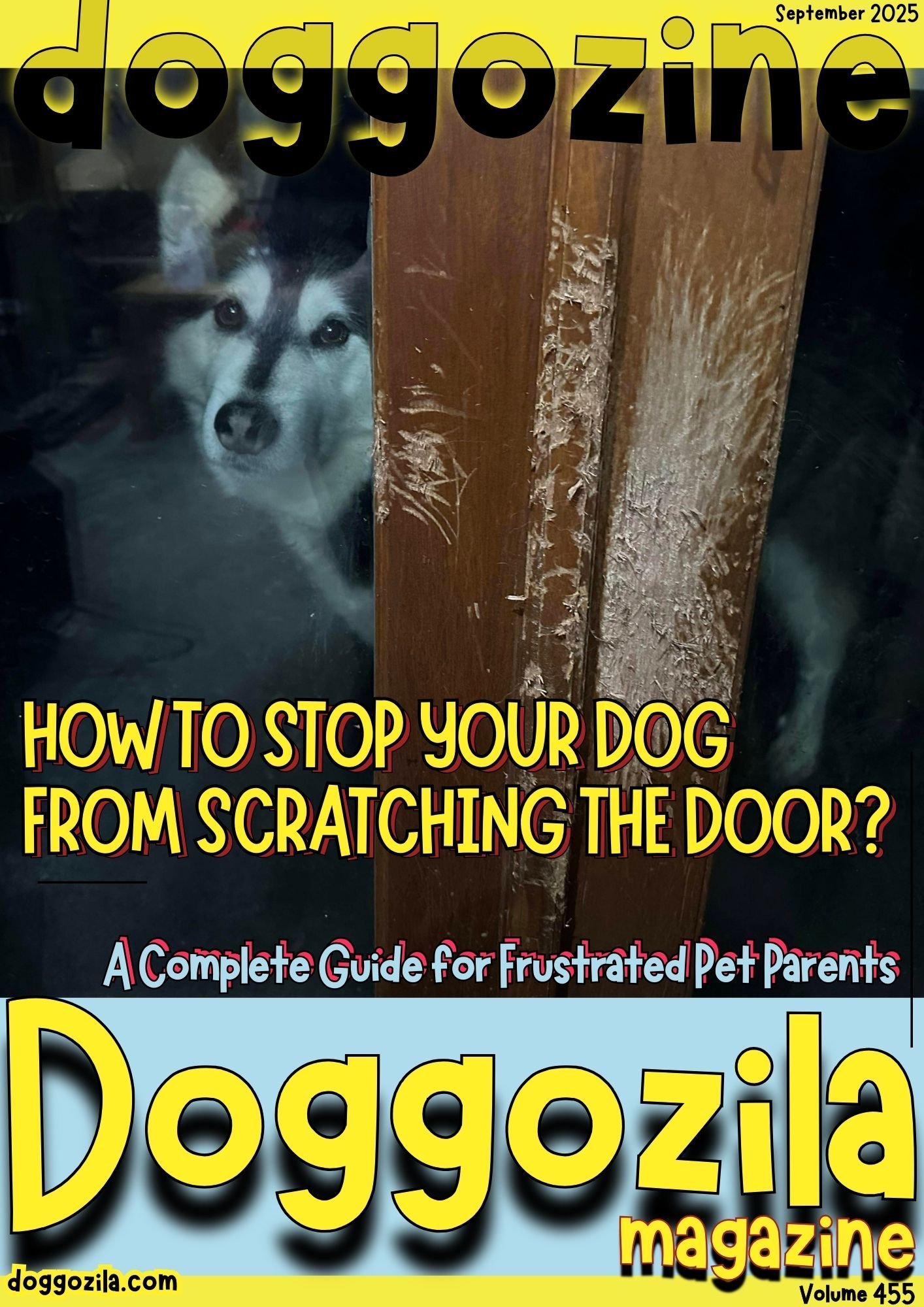
GRASP THE REASONS THAN STOP YOUR DOG FROM DOOR SCRATCHING
Before you can effectively address the problem, you need to play detective and figure out what’s motivating your dog’s actions. Scratching is a symptom, not the disease itself. Dogs don’t scratch doors out of spite. They do it because it has worked for them in the past. This also happens because they are driven by a strong internal emotion like anxiety, boredom, or excitement.
For example your dogs scratched once and you let them out to pee. This teaches them that scratching is the key to a opened door. Maybe they hear you on the other side and can’t stand the separation. By carefully observing when the scratching occurs, you can pinpoint the trigger. Than choose the most effective solution to learn how to stop your dog from scratching the door at its source.
How to Stop Your Dog From Scratching the Door by Identifying Triggers?
The first step in your detective work is to become a keen observer of your dog’s habits. Pay close attention to the context every time the scratching starts. Always ask these questions when your dog is scratching your door.
„ Does it happen primarily when you leave the house, pointing toward separation anxiety? Or does it occur when you’re in another room with the door closed, suggesting isolation distress or FOMO? (fear of missing out) “
Perhaps it only happens in the morning when dogs need to go out for a potty break. This is actually a reasonable communication attempt. Maybe they see a squirrel through the glass patio door and scratch out of intense prey drive and frustration.
Jotting down the timing, what’s happening in the environment, and your dog’s body language will reveal the pattern. Dog trainers say that this log is your most valuable tool. The best method to stop your dog from scratching the door depends entirely on identifying this underlying motivation.
The Psychology Behind the Paw: How to Stop Your Dog From Scratching the Door When It’s Linked to Anxiety?
It’s a critical misconception to think your dog is scratching to “get back at you” or to be deliberately destructive. Dog psychology doesn’t operate on spite. Instead, the behavior is driven by much more fundamental forces. If the scratching is anxiety-based, it’s a coping mechanism for their distress. If it’s to get to something on the other side (like you, the yard, or the mailman), it’s a classic example of a self-rewarding behavior.
The act of scratching might even be enjoyable in itself, providing an outlet for pent-up energy. Understand that your dog is not being “bad” but is rather acting on instinct or learned behavior. The key is to respond with patience and effective training. That is the cornerstone of any plan on how to stop your dog from scratching the door.
Anxiety-driven scratching is often accompanied by whining, pacing, or destructive chewing. In these cases, punishing the behavior can make it worse, as it adds stress to an already anxious dog. Instead, work on building independence through short departures, gradually increasing the time you’re away.
Pair your absence with a high-value chew or puzzle feeder to create a positive association. Some owners find success with calming aids for dogs like pheromone diffusers or anxiety wraps. If the anxiety is severe, a certified behaviorist can help design a tailored plan. Addressing the emotional root is key to stopping the scratching for good.
Why Punishment is a Counterproductive Strategy When You Teach Your Dog To Stop from Scratching The Door?
Yelling, scolding, or using deterrent sprays after the fact might seem like a quick fix, but these punitive measures are often ineffective and can make the problem worse. If your dog is scratching due to anxiety, punishment will only heighten their stress, potentially leading to more severe destructive behaviors or even aggression.
Furthermore, dogs live in the moment. If you don’t catch them in the act of scratching, they will not connect your punishment to their action. They will simply learn that you are unpredictable and scary. The most effective and humane way to learn how to stop your dog from scratching the door is to focus on positive reinforcement for desired behaviors. Also managing the environment to prevent the unwanted scratching from happening in the first place.
How to Stop Your Dog From Scratching the Door Out of Excitement?
Some dogs scratch because they’re overjoyed to see you or eager to greet visitors. In this case, the scratching is part of a larger burst of energy. Teaching an alternative behavior like sitting calmly before the door opens, can redirect that excitement into something less destructive.
Use treats, praise, and repetition to reinforce the new behavior. Over time, your dog will learn that calmness, not scratching, gets them what they want. This approach works especially well for social, people-loving breeds.
🔑 Key Points: The first step is to identify the root cause of this behavior. Scratching is a symptom of an underlying issue like anxiety, boredom, or a learned behavior, not spite.
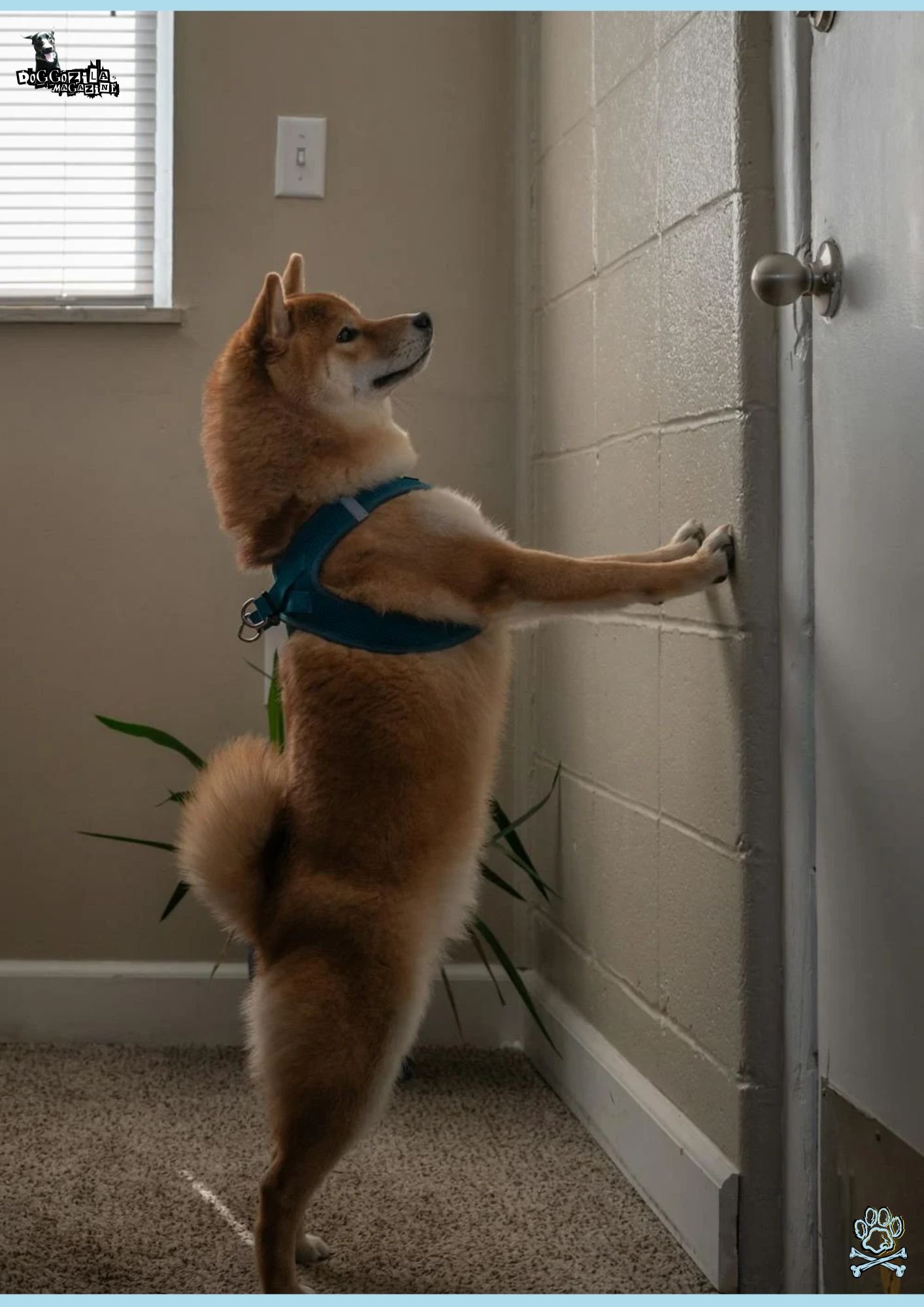
TRAINING SOLUTIONS: HOW TO STOP YOUR DOG FROM SCRATCHING THE DOOR WITH POSITIVE REINFORCEMENT?
The most powerful and lasting way to solve the door scratching dilemma is to train your dog to perform a different, incompatible behavior that they simply cannot do while scratching. Instead of just telling them “no,” you give them a clear “yes“, a specific action they can take to get what they want. This redirects their energy into an acceptable outlet. It empowers them to communicate in a way that doesn’t destroy your property. This positive approach strengthens your bond and effectively teaches your dog the precise protocol. So, to stop your dog from scratching the door, replace the bad habit with a good one.
Positive reinforcement is one of the most effective ways to change behavior without damaging your bond. Instead of punishing your dog for scratching, reward them for doing something else like sitting, lying down, or walking away from the door. This method builds trust and makes training a game rather than a battle. The key is timing, reward the desired behavior immediately so your dog makes the connection.
The “Go to Your Bed” or “Place” Command
This is an invaluable command for a multitude of behavioral issues, including door scratching. The concept is simple. You teach your dog that when they feel the urge to scratch or when a trigger occurs, they should instead go to a specific designated spot, like their bed or a mat, and lie down calmly. This behavior is incompatible with scratching, they can’t be at the door and on their bed at the same time.
Start by training the “place” command in a calm environment with high-value treats. Once they’ve mastered it, you can begin to practice while gradually introducing distractions, like walking toward the door. This provides them with a clear job to do instead of misbehaving. It is a foundational strategy to stop your dog from scratching the door out of excitement or attention-seeking.
Training a “Quiet Bell” System for Potty Needs
If your dog is scratching specifically to signal that they need to go outside to relieve themselves, they are trying to communicate! The problem isn’t the communication, but the method. A brilliant solution is to train them to use potty bells hung from the door handle. Every time you take them out for a bathroom break, gently guide their nose or paw to tap the bells right before you open the door.
Soon, they will make the connection, ringing the bells makes the door open. This gives them a clear, acceptable, and non-destructive way to tell you they need to go out. It effectively solves the puzzle of how to stop your dog from scratching the door by satisfying their need to communicate while protecting your woodwork.
The “Sit and Stay” Protocol for Doorway Manners
For dogs that scratch out of impulsive excitement when a door is opened (e.g., to charge into the yard or greet a guest), teaching rock-solid doorway manners is essential. This involves training your dog to automatically “sit” and “wait” or “stay” whenever a door is opened. They only get the release cue (“okay!“) to go through once they are calm and the door is fully open.
This not only prevents frantic scratching but also ensures safety by stopping them from bolting. Practice this during low-stakes moments throughout the day, using treats to reward calm behavior. This training instills self-control. It is a crucial component of any plan to stop your dog from scratching the door from a place of over-excitement.
How Rewarding Calm Behavior Will Stop Your Dog From Scratching the Door?
Start by catching your dog in moments of calm near the door. Toss them a treat or offer gentle praise when they’re relaxed and not scratching. Gradually increase the duration they must remain calm before receiving the reward.
This teaches patience and self-control, skills that carry over into other areas of life. Consistency is crucial, everyone in the household should follow the same rules. Over time, your dog will choose calmness over chaos because it pays off.
Using Clicker Training to Reinforce Alternatives or Redirecting Energy
Clicker training for dogs can speed up the learning process by marking the exact moment your dog does the right thing. For example, if they approach the door but stop short of scratching, click and treat. This clarity helps your dog understand exactly which action earned the reward. Clicker training is backed by decades of research in animal learning. It is used in everything from guide dog programs to zoo animal care. It’s a precise, humane way to shape behavior.
Sometimes, the best way to stop a behavior is to give your dog something better to do. Keep a basket of toys or chews near the door and offer one when they start to scratch. This not only interrupts the unwanted behavior but also satisfies their need for stimulation. Over time, they’ll learn to seek out the toy instead of the door. This redirection works especially well for high-energy breeds like Border Collies or Labradors.
🔑 Key Points: Use positive reinforcement to train an incompatible behavior, which redirects your dog’s energy into an acceptable action and empowers them to communicate without destroying property.
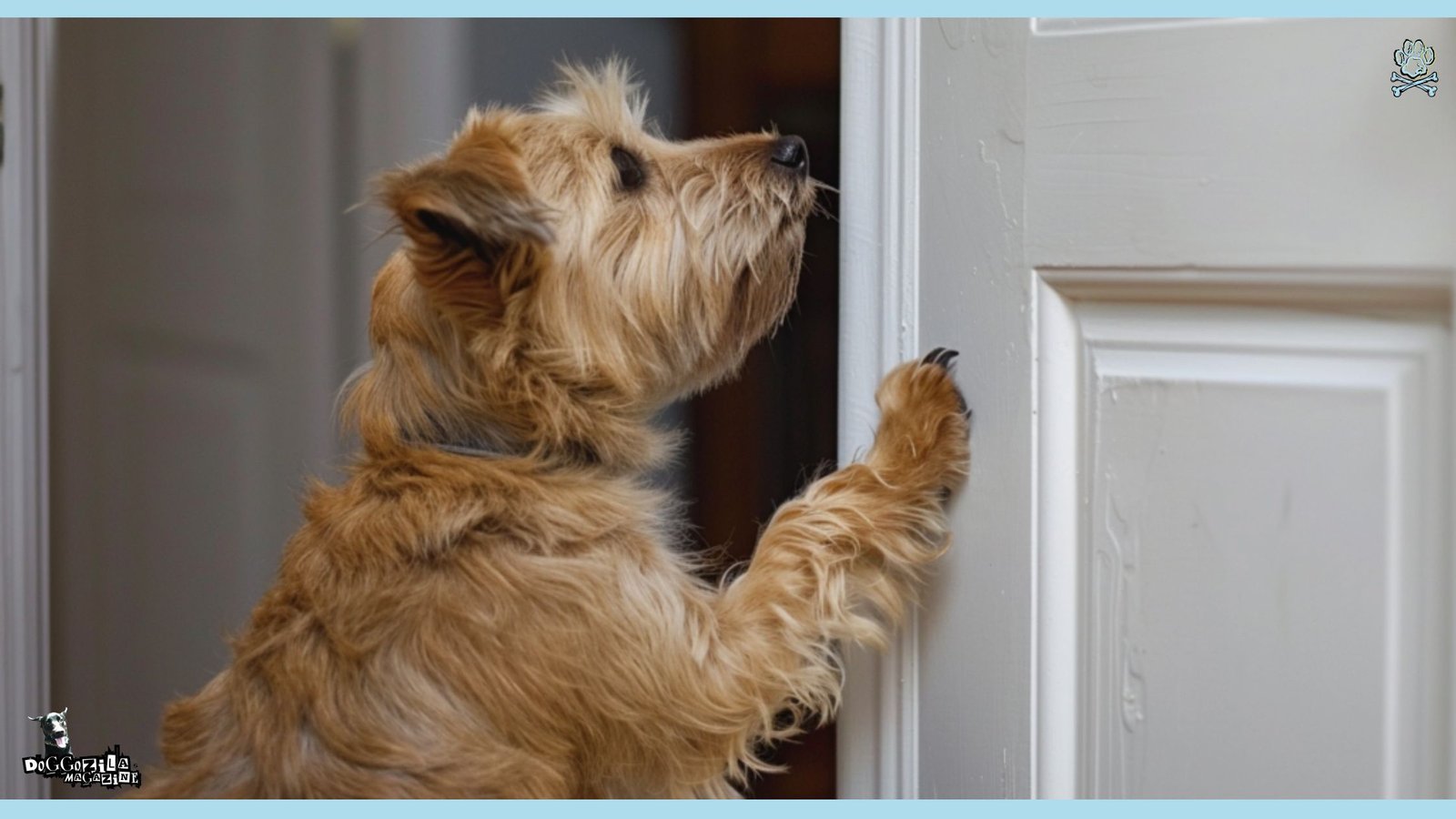
MANAGEMENT AND ENVIRONMENTAL CHANGES: SET YOUR DOG FOR SUCCESS
While training addresses the long-term behavior, management is about preventing the practice of scratching in the short term. This is a critical part of the process because every time your dog successfully scratches the door, the habit becomes more ingrained.
By using smart management strategies, you protect your door from damage and protect your dog from rehearsing the bad habit, making the training process faster and more effective. Think of management as the essential fence that keeps your dog on the right path while you build the permanent bridge of training.
Using Baby Gates and Exercise Pens to Block Access
The simplest and most immediate solution is to physically prevent your dog from getting to the door they love to scratch. A sturdy baby gate or exercise pen can be used to create a barrier, keeping your dog in a dog-proofed room or area away from the problem door.
This is an especially useful tool when you cannot actively supervise your dog, like when you’re taking a shower or are asleep. It provides a guaranteed time-out for the behavior and is a fundamental first step in how to stop your dog from scratching the door while you work on the underlying training. It’s a stress-free solution for both of you.
Training takes time, and in the meantime, you’ll want to prevent further damage. Door protectors, clear plastic panels, or even temporary baby gates can shield your door from claws. These solutions don’t fix the root cause, but they buy you time while you work on behavior change. Think of them as insurance for your home.
Applying Dog-Appeasing Pheromones and Calming Aids
For dogs whose scratching is rooted in anxiety, particularly separation anxiety, management can include creating a calmer state of mind. Products like Adaptil (a synthetic version of the comforting pheromone a mother dog emits) can be very effective. It comes as a plug-in diffuser, spray, or collar and can help take the edge off your dog’s anxiety.
Other calming aids like pressure wraps (e.g., Thundershirt), calming chews with ingredients like L-theanine and melatonin, or even classical music designed for dogs (through stations like Spotify’s “My Dog’s Favorite Podcast“) can create a more soothing environment. Using these tools reduces the anxious drive that leads to scratching and is a key supportive tactic in how to stop your dog from scratching the door.
Providing Mental and Physical Stimulation to Prevent Boredom
A tired dog is a good dog. Often, destructive behaviors like door scratching are simply a result of pent-up energy and boredom. Ensuring your dog gets adequate physical exercise (like long walks, runs, or games of fetch) and mental stimulation (like puzzle toys, snuffle mats, training sessions, or frozen Kongs) is a non-negotiable part of the solution.
Before you leave the house or during times they are typically restless, provide a engaging activity that will tire them out. A dog who is mentally and physically exhausted is far less likely to seek out destructive outlets like scratching. This proactive approach is a cornerstone of how to stop your dog from scratching the door by eliminating the root cause of boredom.
🔑 Key Points: Use physical barriers like baby gates to prevent access to the door, protecting it from damage and stopping your dog from rehearsing the bad habit while you train.
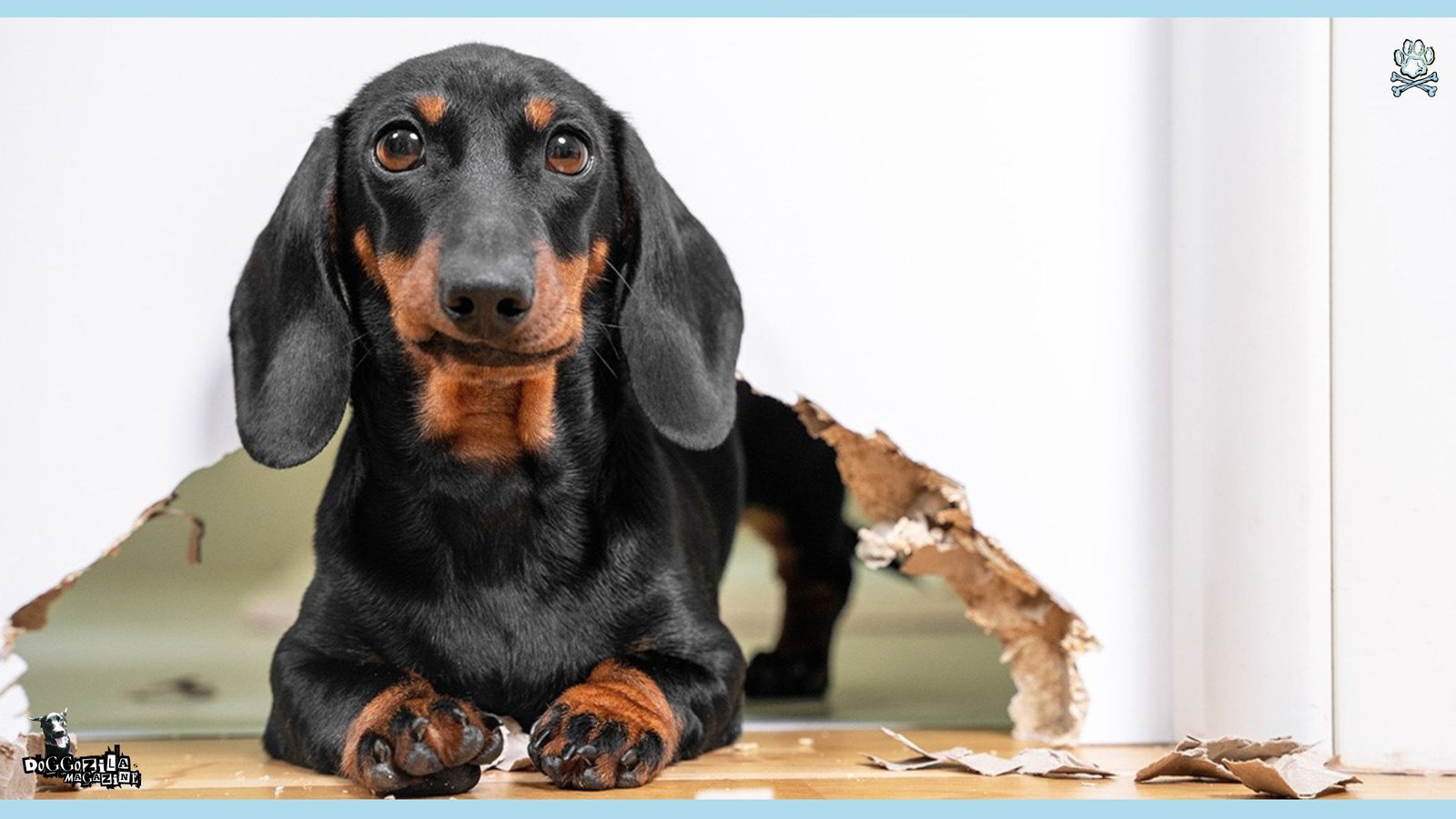
ADDRESSING SEVERE ANXIETY: WHEN TO SEEK PROFESSIONAL HELP
For some dogs, door scratching is not a simple bad habit but a symptom of a deeper, more serious issue like severe separation anxiety or compulsive disorder. If your dog shows signs of extreme distress when left alone, such as non-stop scratching, howling, drooling, pacing, or attempting to escape. This goes beyond standard training advice. In these cases, a dedicated behavior modification plan overseen by a professional is necessary for the welfare of your dog and the safety of your home.
If scratching happens mainly when you’re gone, separation anxiety may be the culprit. This is a complex issue that requires patience and a gradual approach. The goal is to teach your dog that being alone is safe and temporary. This often involves desensitization and counter-conditioning.
How to Recognize the Signs of Separation Anxiety vs. Boredom?
It’s important to distinguish between a bored dog and an anxious dog, as the treatment plans are different. A bored dog might scratch the door a few times but will then find something else to do or will sleep. A dog with separation anxiety will exhibit intense, persistent, and often panicked behaviors only when you are preparing to leave or are gone.
They may drool excessively, have destructive chewing focused on exit points, have potty accidents despite being house-trained, or try to escape with such force they injure themselves. If you suspect true separation anxiety, this is a clear sign you need professional guidance on how to stop your dog from scratching the door in this specific context.
The Role of a Certified Professional Dog Trainer or Behaviorist
For severe anxiety, consulting a Certified Professional Dog Trainer (CPDT-KA) or a Veterinary Behaviorist (DACVB) is the best course of action. These professionals can design a customized behavior modification plan for you. This often involves systematic desensitization and counterconditioning, which is a gradual process of changing your dog’s emotional response to being alone.
They can also help you implement management strategies effectively and may, in consultation with your vet, discuss whether anti-anxiety medication could be helpful to lower your dog’s anxiety enough for the training to take hold. This professional partnership is the most effective and compassionate path how to stop your dog from scratching the door when it’s driven by profound fear.
How to Create a Safe and Secure “Home Alone” Space for Your Dog?
A key part of managing dog anxiety, often with a professional’s help, is creating a designated safe space for your dog when you are gone. This could be a crate (if they are crate-trained and find it comforting) or a single room like a utility room with a baby gate. This space should be associated with positive things, such as amazing treats, their favorite bed, and calming tools like a pheromone diffuser.
By limiting their access to the entire house and especially the doors, you prevent the practicing of the scratching behavior and help contain their anxiety to a smaller, safer area. This managed environment is a critical component of the overall strategy on how to stop your dog from scratching the door due to anxiety.
How Gradual Departures Will Stop Your Dog from Door Scratching?
Start by leaving for just a few seconds, then gradually increase the time. Pair each departure with a special treat or toy that only appears when you’re gone. This creates a positive association with your absence. Over time, your dog will learn that you always come back. This method is slow but highly effective.
Teach your dog to be comfortable in another room while you’re home. This builds independence and reduces the shock of being alone. Start with short periods and gradually increase the time. Reward calm behavior with praise or treats. This skill is invaluable for preventing anxiety-driven scratching.
🔑 Key Points: For signs of severe separation anxiety like panicked escape attempts, consult a certified professional who can create a customized behavior modification plan, which may include desensitization.
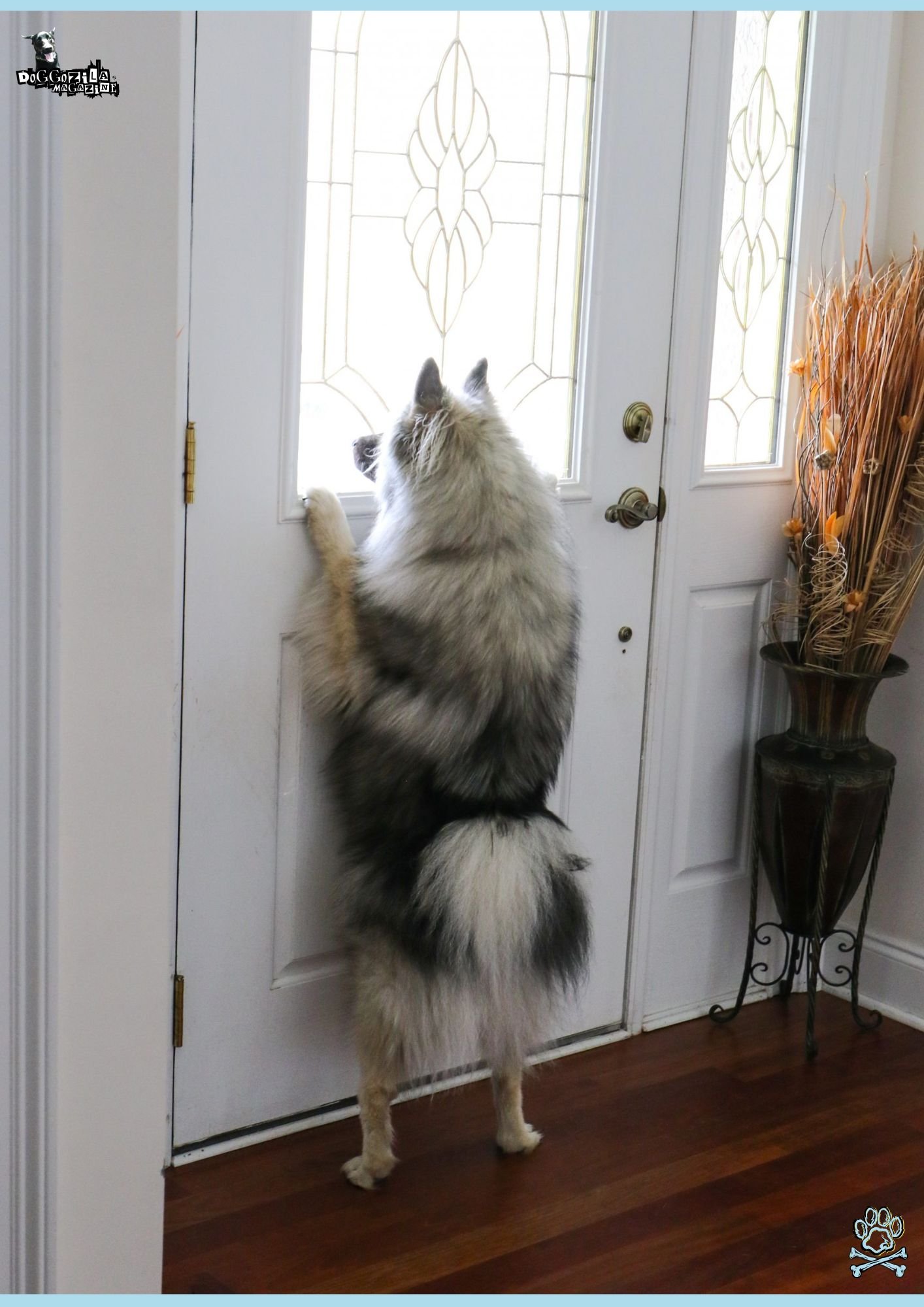
REPAIR AND PREVENTION: PROTECTING YOUR DOORS FROM DAMAGE
While you work on the behavioral solutions, you’ll also need to address the physical damage and protect your doors from future harm. Thankfully, there are numerous products and simple fixes that can deter your dog’s claws and repair existing scratches, saving you money and preserving your home’s aesthetics. Combining these physical barriers with your training efforts creates a multi-layered defense that is highly effective.
Training tools can support your efforts but should never replace proper training. From treat pouches to clickers, the right tools make it easier to reward good behavior consistently. The key is to use them as part of a broader plan.
DIY Solutions: Scratch Guards and Protective Films
You don’t have to spend a fortune to protect your doors. A simple, clear acrylic panel (often sold as a cabinet door guard) can be attached to the bottom of the door where your dog scratches, creating a smooth, hard surface that is difficult to get a grip on. Alternatively, transparent adhesive films (like those used to protect furniture from cats) can be applied directly to the door.
The material is durable and the sticky feel is often unappealing to dogs. For a even simpler hack, some owners have success by temporarily taping a flattened cardboard box over the target area. These barriers are a fantastic first line of defense while you figure out how to stop your dog from scratching the door through training.
Training Aids: Pet Correctors and Deterrent Sprays
These tools should be used with caution and as a last resort, not a first option. Pet deterrent sprays come in two types, ones that leave an unappealing sticky or gritty texture on the surface, and ones that use a scent (like citrus) that dogs find unpleasant. The key is to apply these deterrents before the dog scratches, not after, so they associate the unpleasant sensation with the act of touching the door.
A “pet corrector,” which is a compressed air can that emits a sudden hiss, can be used to interrupt the behavior as it happens, but you must be present. The interruption should then be immediately followed by redirecting them to the correct behavior (like going to their bed). These are management aids, not a standalone solution for how to stop your dog from scratching the door.
Related Article Recommendation:
Doorbell Dog Etiquette: How To Stop The Barking at Your Guests?
How Incorporating Technology into Training Can Stop Your Dog From Scratching the Door?
Pet cameras let you monitor your dog when you’re away and even speak to them. Some modern pet cameras even allow you to dispense treats remotely, which can be a game-changer for reinforcing calm behavior when you’re not home. This technology works best when paired with consistent in-person training, so your dog doesn’t become reliant on the novelty of the device alone.
You can also use recorded cues like your voice saying “leave it” or “sit”, to remind your dog of the rules in real time. For dogs with mild anxiety, hearing your voice can be reassuring enough to prevent scratching altogether.
Just remember that tech is a supplement, not a substitute, for the trust and structure you build face-to-face. When used thoughtfully, these tools can bridge the gap between your presence and absence, making your training more consistent and effective.
Easy Fixes for Repairing Superficial Scratches
If your door has already fallen victim to your dog’s claws, don’t despair. For superficial scratches on wooden doors, you can often buff them out with a walnut. Simply rub the meat of the walnut into the scratch, the natural oils can darken the light wood and help mask the mark.
For deeper scratches, a wood filler stick or marker that matches your door’s stain can work wonders. Clean the area, apply the filler, let it dry, and lightly sand it smooth. For painted doors, a small bit of touch-up paint is an easy fix.
Taking care of the damage can also be a psychological boost for you, making the problem feel more manageable as you work on the long-term behavioral fix for how to stop your dog from scratching the door.
🔑 Key Points: While training, use DIY solutions like clear acrylic panels or adhesive films to protect your doors from damage and repair existing scratches with wood filler or touch-up paint.
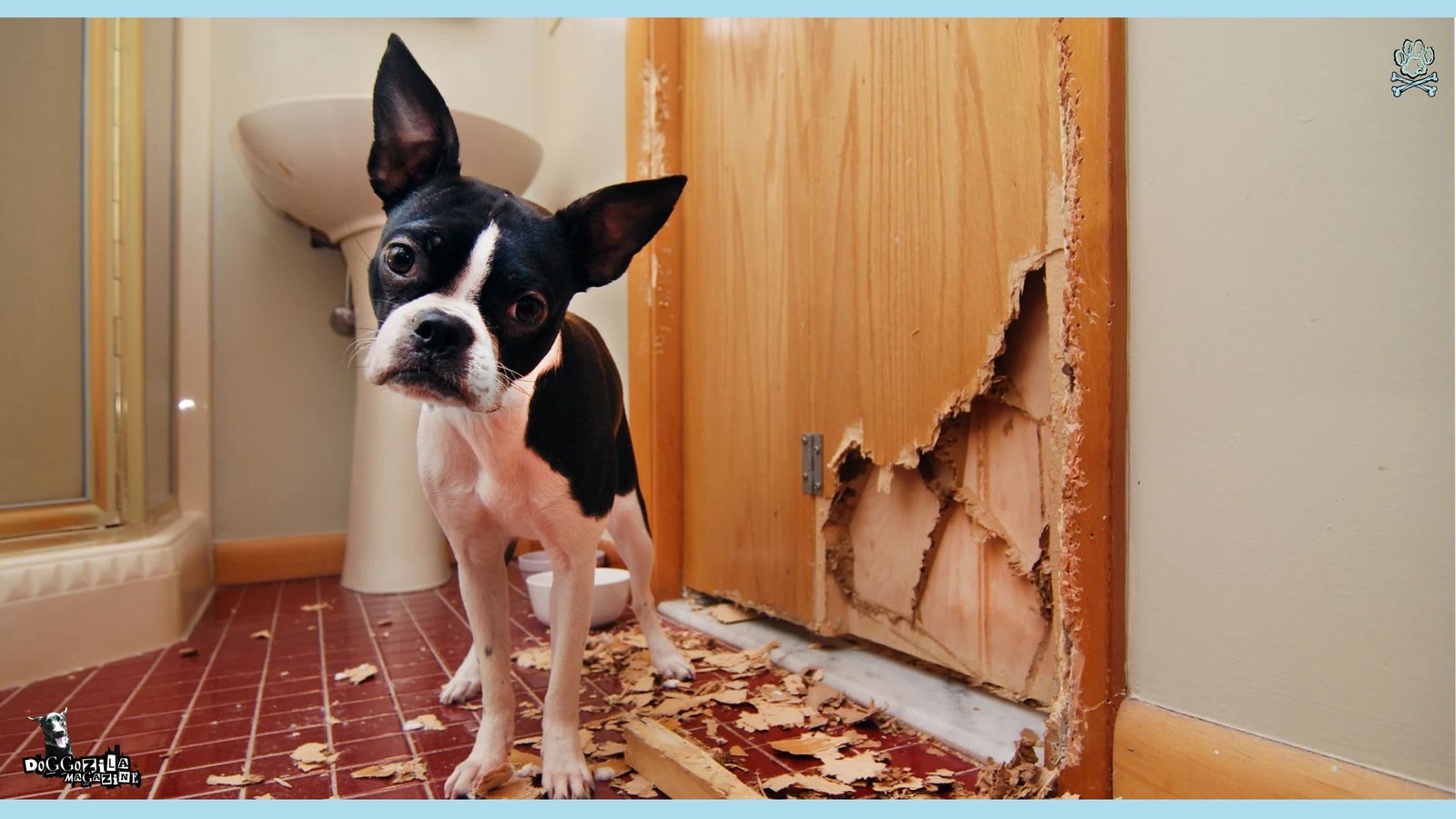
HOW TO STOP YOUR DOG FROM SCRATCHING THE DOOR BY TRAINING A “GO TO MAT” CUE
The “go to mat” cue is a versatile skill that can be used in many situations, from greeting guests to waiting for dinner. This not only stops scratching but also promotes calmness and impulse control. Many trainers use this as a foundation for polite greetings and household manners. It’s a skill that pays off well beyond the door.
Start by luring your dog onto the mat with a treat, then rewarding them for staying there. Gradually increase the duration and add distractions, like someone walking past the door. Eventually, you can cue them to go to the mat whenever they approach the door.
Teaching a “Wait” Command at the Door
The “wait” command teaches your dog to pause before going through a doorway, which can naturally reduce scratching. Begin by asking your dog to sit or stand still a few feet from the door, rewarding them for holding position. Slowly increase the time they must wait before you open the door.
This builds patience and reinforces that the door only opens when they’re calm. Over time, your dog will associate the door with stillness rather than frantic scratching. This is especially useful for multi-dog households where excitement can escalate quickly.
How to Stop Your Dog From Scratching the Door by Using Target Training
Target training is teaching your dog to touch a specific object with their nose or paw, it can redirect their focus away from the door. You might use a small mat, a wall target, or even your hand as the target. When they approach the door, cue them to target instead, then reward generously.
This gives them a purposeful action to perform and breaks the scratching habit. Target training is mentally stimulating and can be expanded into other tricks and tasks, making it a fun addition to your training toolkit.
Consistency and Patience: The Long Game
Changing a behavior like door scratching doesn’t happen overnight. It requires consistent cues, rewards, and management strategies. Every member of the household needs to follow the same rules so your dog doesn’t get mixed messages. With time, patience, and a bit of creativity, you can replace scratching with calmer, more desirable behaviors.
🔑 Key Points: The “go to mat” cue is a versatile skill that can be used in many situations, from greeting guests to waiting for dinner. It’s a skill that pays off well beyond the door.
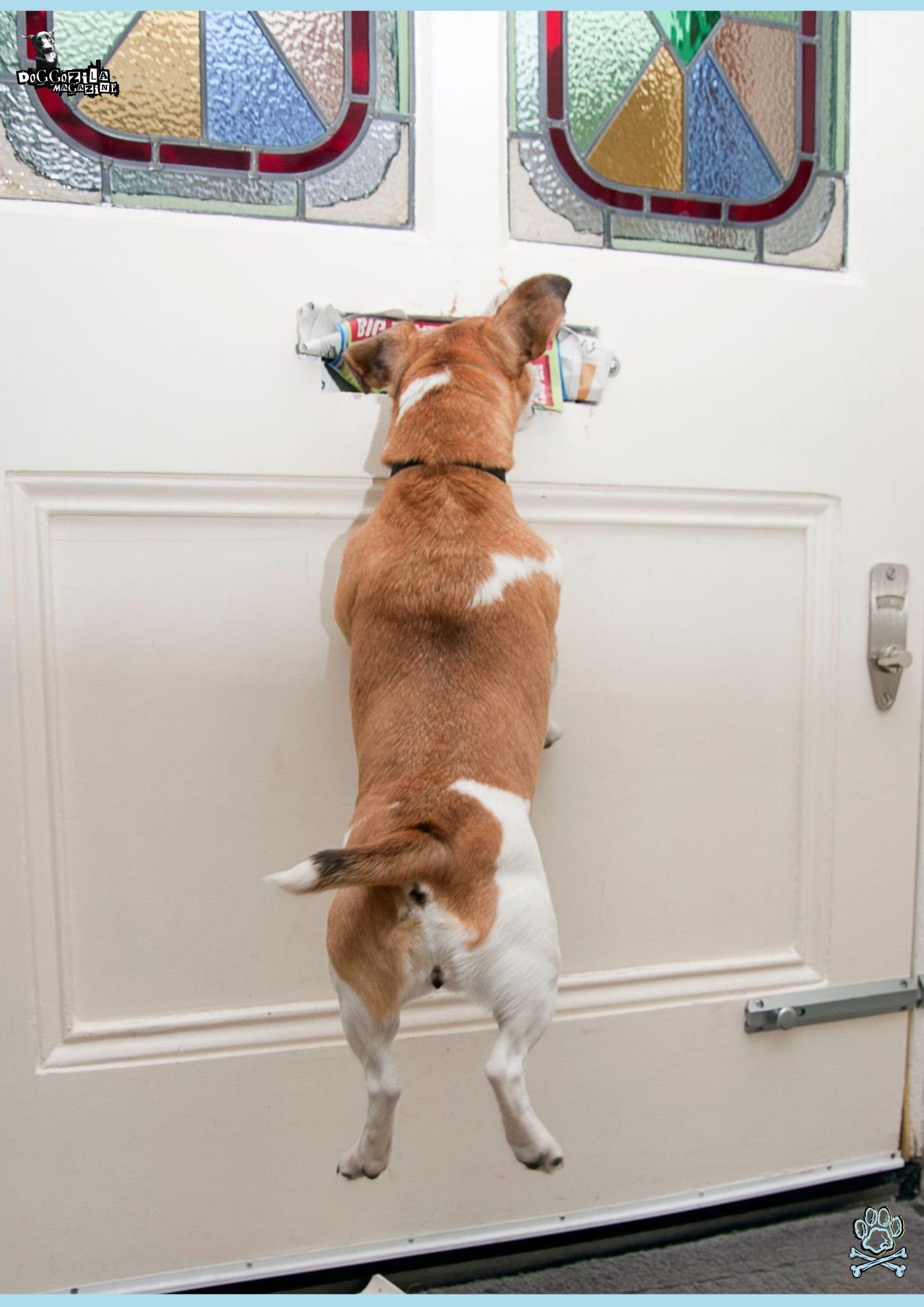
HOW TO STOP YOUR DOG FROM SCRATCHING THE DOOR BY KEEPING A TRAINING LOG
A training log helps you track progress, identify patterns, and stay motivated. Note the time of day, triggers, and your dog’s response to different strategies. Over weeks, you’ll see trends that can guide adjustments to your plan. This record also helps if you decide to consult a trainer, as they’ll have a clear picture of what’s been tried.
Logging successes, no matter how small, keeps morale high and reinforces that you’re moving in the right direction. It’s a simple but powerful tool for staying on track.
Celebrating Small Wins to Maintain Momentum
Every time your dog chooses not to scratch, it’s a victory worth acknowledging. Celebrate with praise, a treat, or a quick play session. These moments reinforce the behavior you want and keep training enjoyable for both of you. Over time, these small wins add up to lasting change. Remember, your dog is learning a new habit, and that takes repetition and encouragement.
Related Article Recommendation:
How to Train Your Dog to Open and Close Doors?
How to Stop Your Dog From Scratching the Door by Staying Flexible
If one approach isn’t working, don’t be afraid to pivot. Dogs are individuals, and what works for one may not work for another. Stay open to trying new techniques, adjusting your rewards, or changing the training environment.
Flexibility ensures you can adapt to your dog’s needs and keep progress moving forward. The ultimate goal is a calm, happy dog and an intact door, and there’s more than one path to get there.
🔑 Key Points: Become a detective by observing and logging the context of each scratching incident to pinpoint the specific trigger, such as separation anxiety, a need to potty, or excitement.

MAINTAINING CONSISTENCY AND CELEBRATING SUCCESS
The final, and perhaps most important, step in this entire process is commitment. Changing a learned behavior takes time, patience, and unwavering consistency from every member of the household. If one person allows the scratching while another corrects it, your dog will be confused and the training will fail.
Everyone must be on the same page, using the same commands and reward systems. Remember to celebrate the small victories, a day without scratching, a successful “place” command near the door, because those are the building blocks of permanent change.
Creating a Household Plan for Everyone to Follow
Gather your family and make a clear plan. Decide on the specific incompatible behavior you will train (e.g., “go to your bed“). Agree on the management rules (e.g., “the baby gate stays up when we’re not in the living room”). Choose your high-value rewards that will be used exclusively for this training.
When everyone is consistent, the dog learns the new rule much faster. This unified front is the ultimate secret weapon in how to stop your dog from scratching the door. Consistency is the language dogs understand best.
The Power of Positive Reinforcement and Patience
Always remember to reward the behavior you want to see. When your dog chooses to lie on their bed instead of approaching the door, toss them a treat. When they ring the bell instead of scratching, praise them enthusiastically and immediately open the door. You are building a new, positive habit to replace the old, destructive one.
This process requires patience. There will be setbacks, but reacting with frustration will only set you back. Stay calm, consistent, and positive. Your dog is trying to learn what you want, and a positive approach is the fastest and kindest way to succeed in your goal of how to stop your dog from scratching the door.
How to Know When You’ve Solved the Problem?
You’ll know your training is complete when your dog’s default behavior around the target door is calm and appropriate. They will either automatically go to their bed when excited, use the bell to signal, or simply relax because their anxiety has been managed. The scratching will have ceased entirely.
Even then, it’s wise to occasionally reinforce the good behavior with a random treat to keep the habit strong. You’ve not only saved your door, but you’ve also built a stronger, more communicative relationship with your dog. By understanding the cause and applying these consistent, positive solutions, you have successfully learned how to stop your dog from scratching the door for good.
Your patience and consistency today will build a calmer,
happier tomorrow for both you and your dog.

Celebrate every small victory,
you’re not just saving your door, you’re strengthening a bond of trust that lasts a lifetime.









